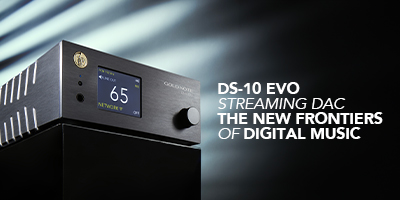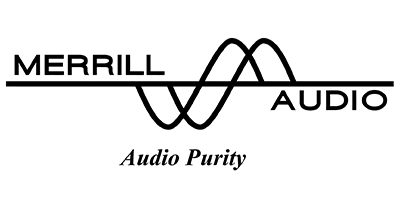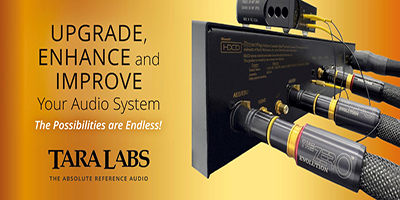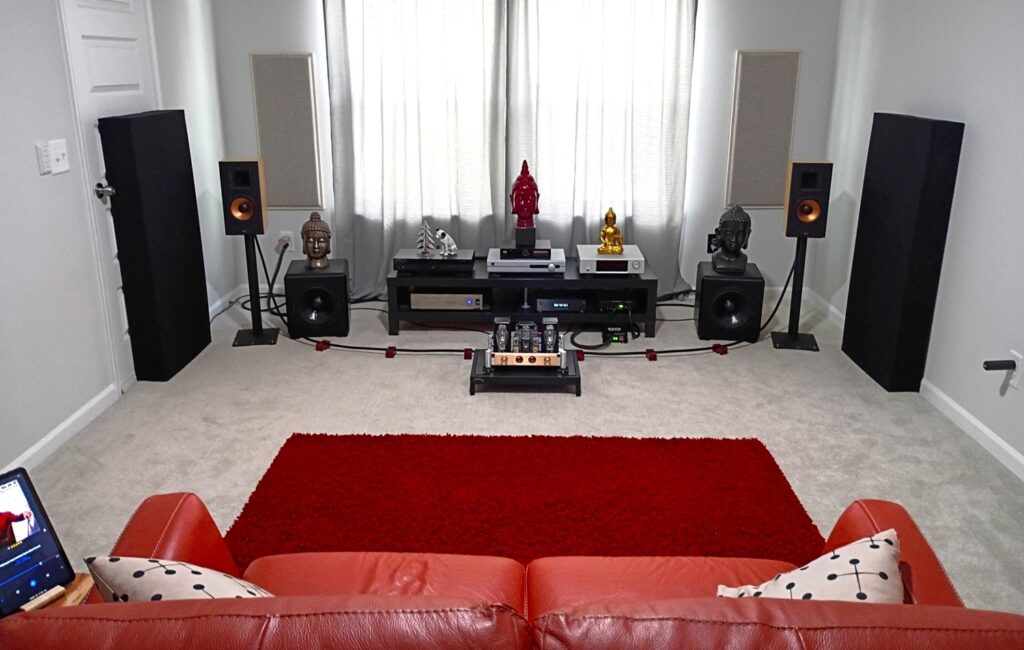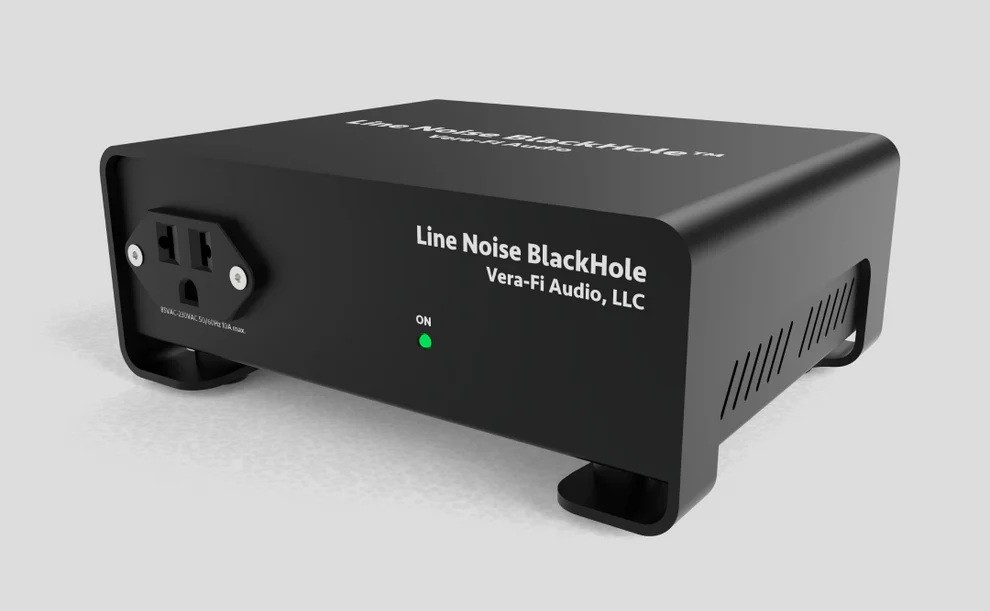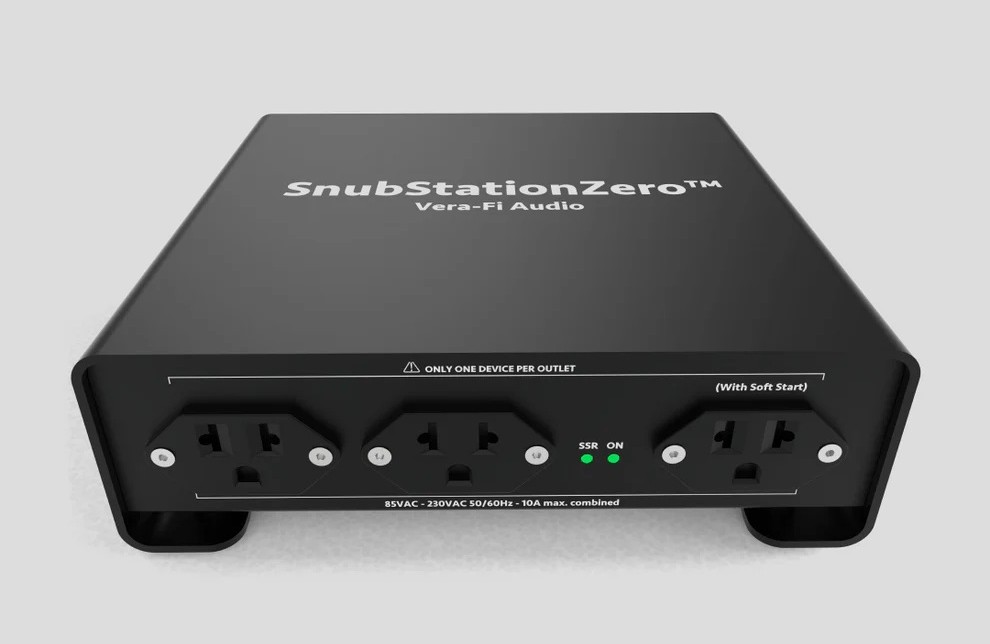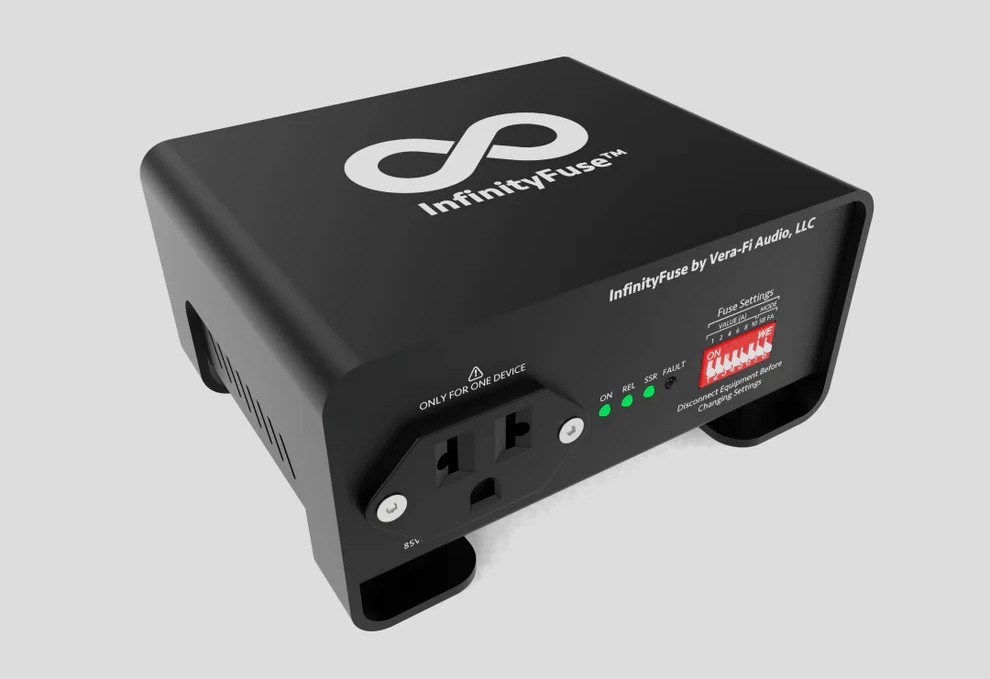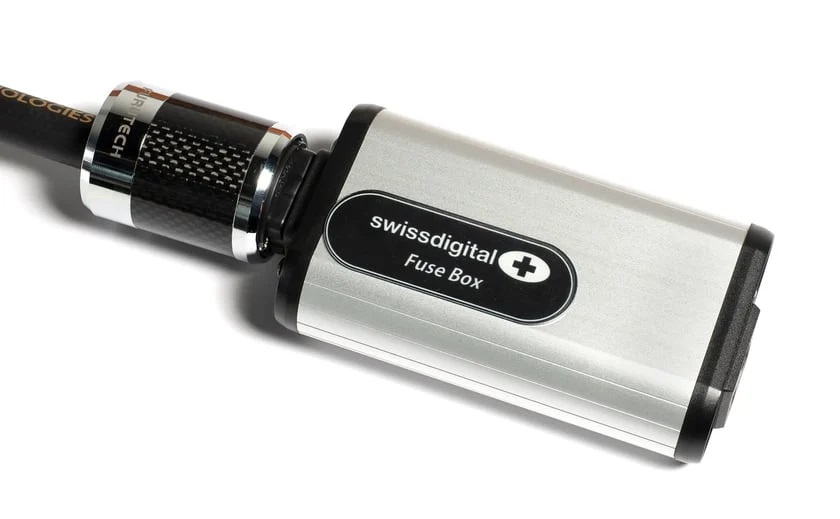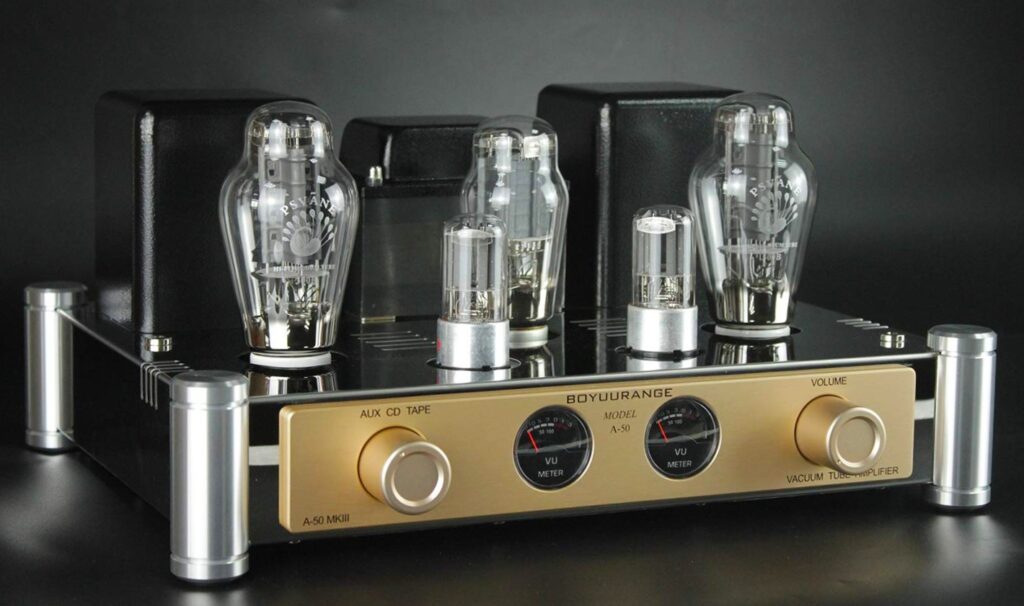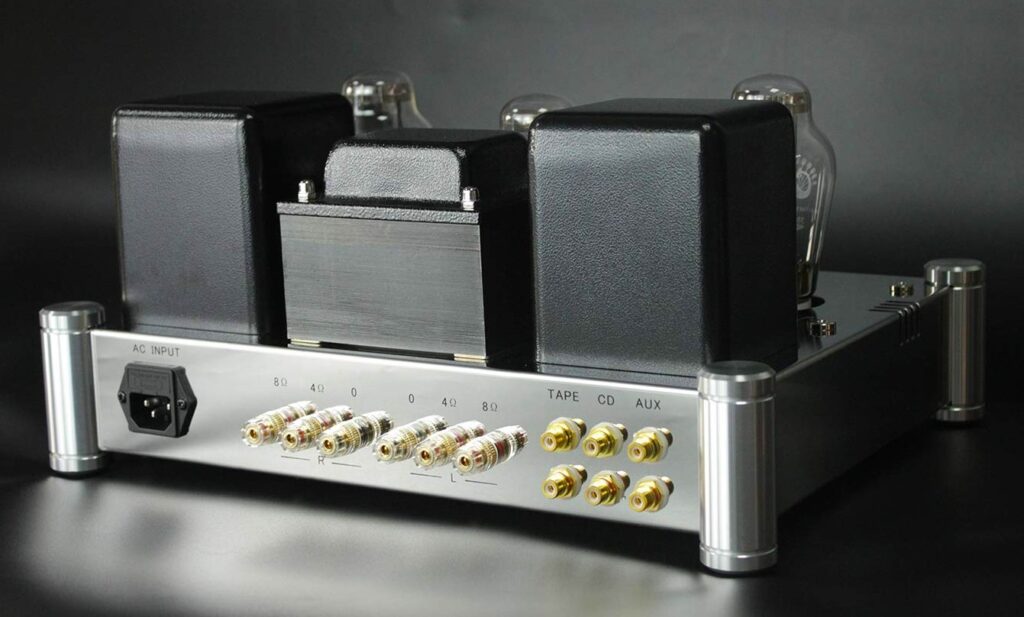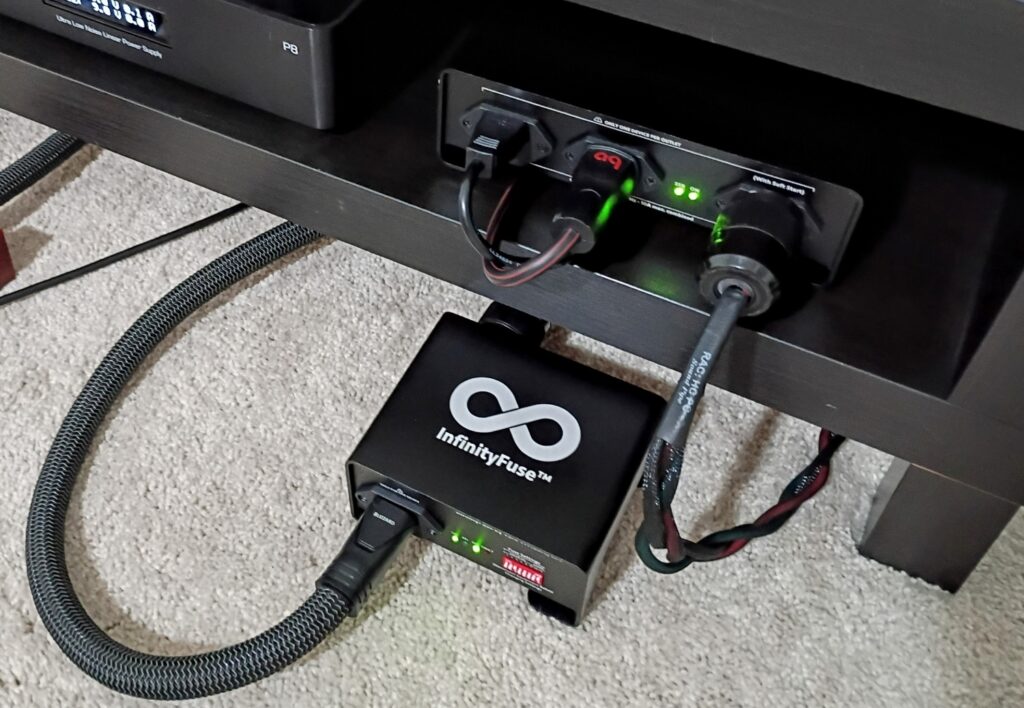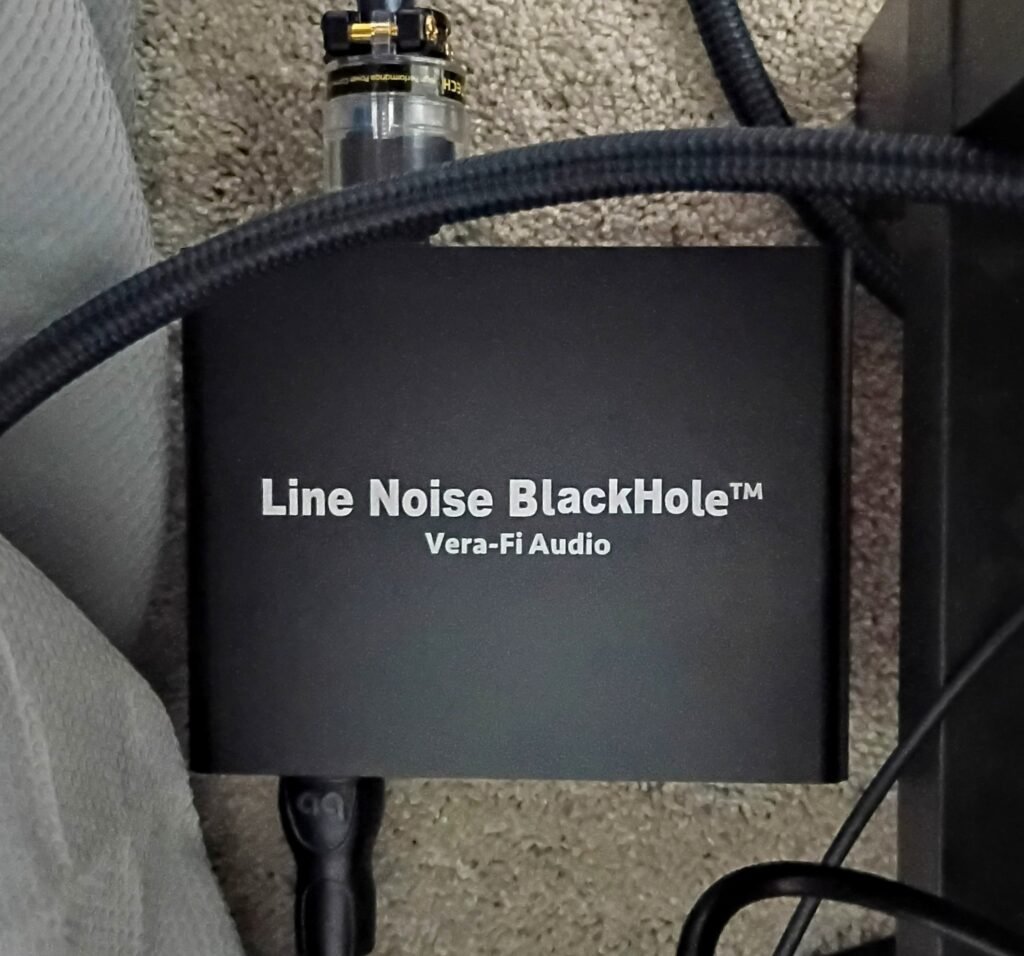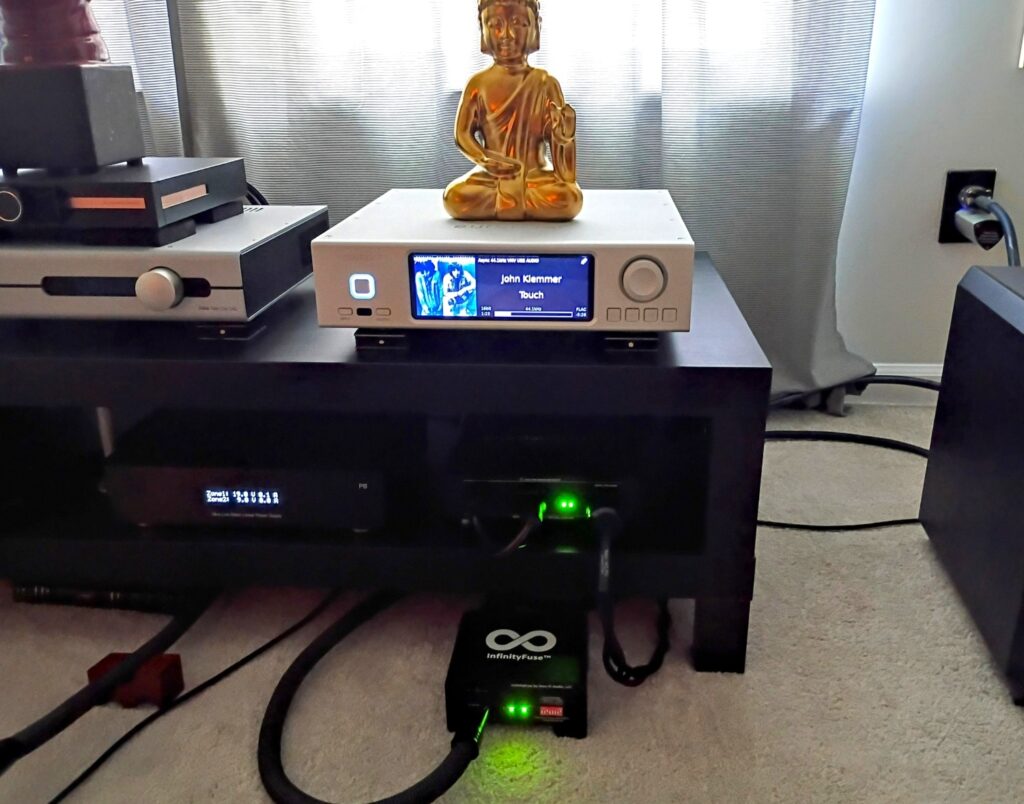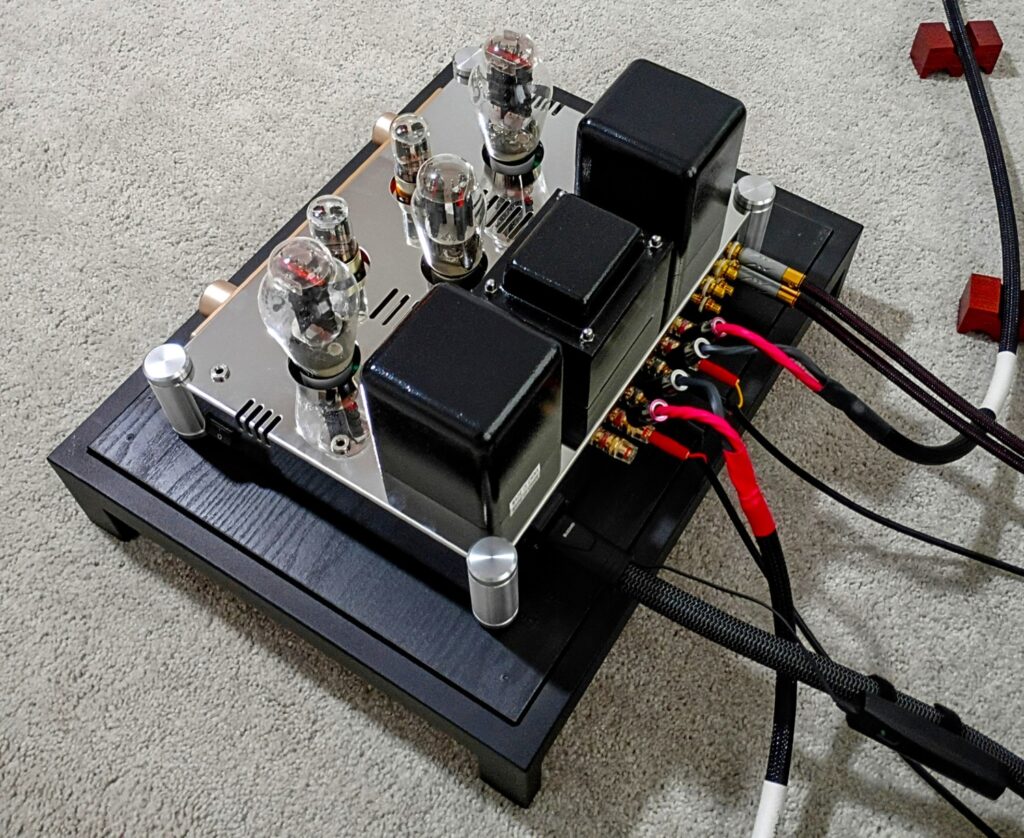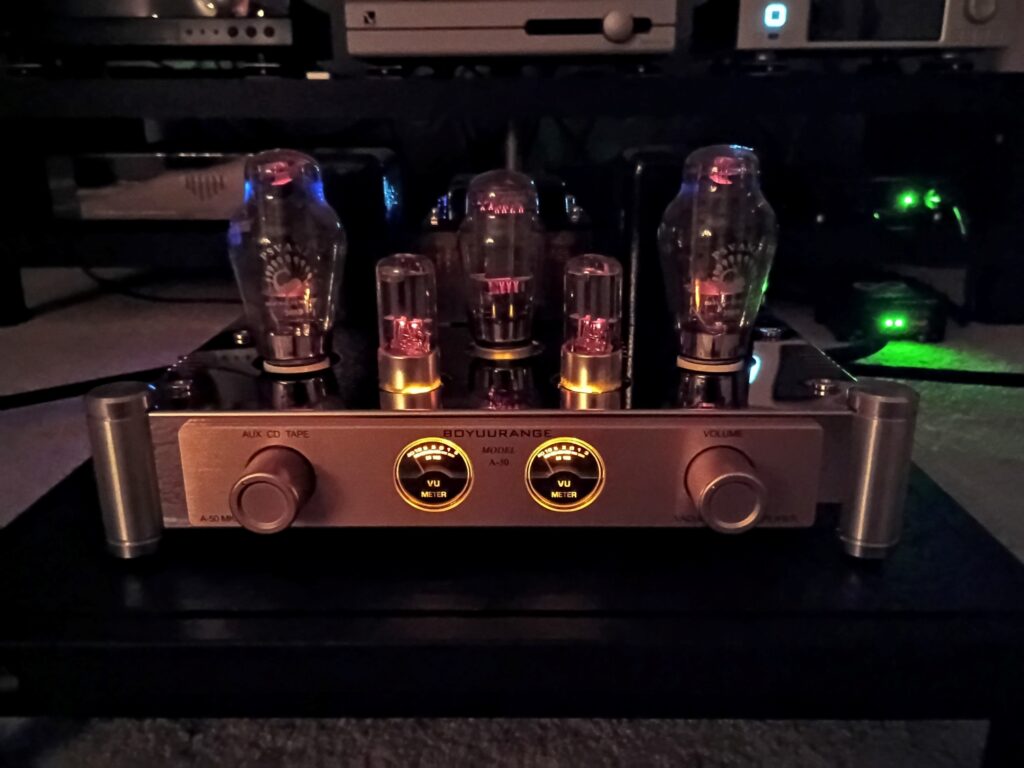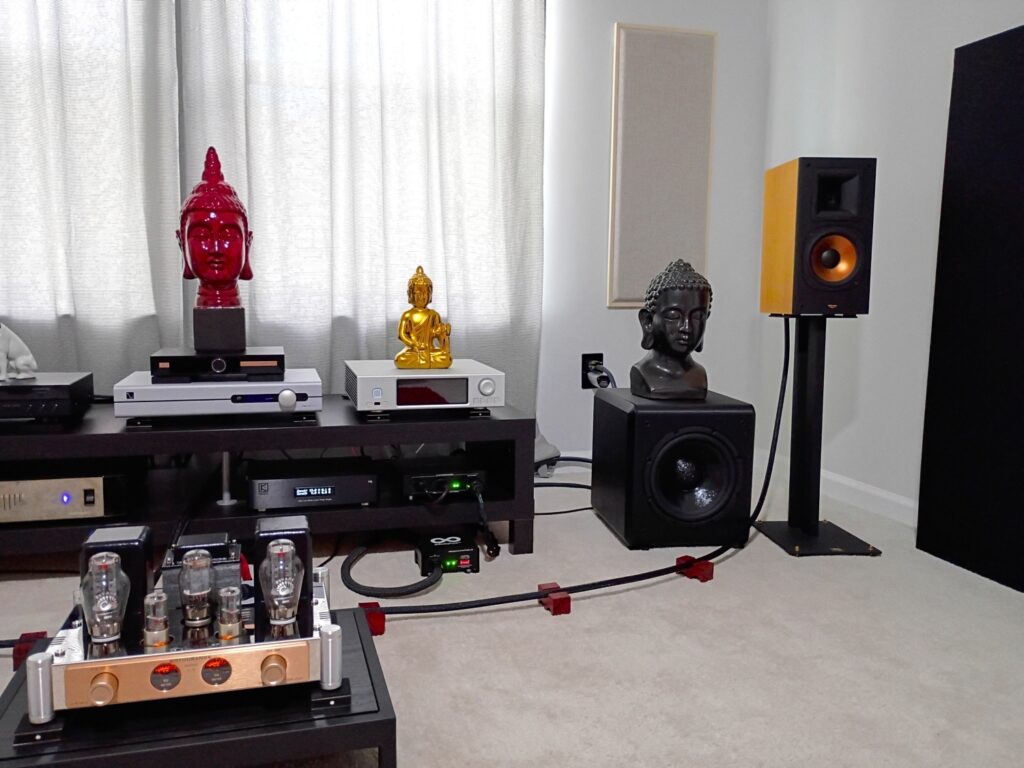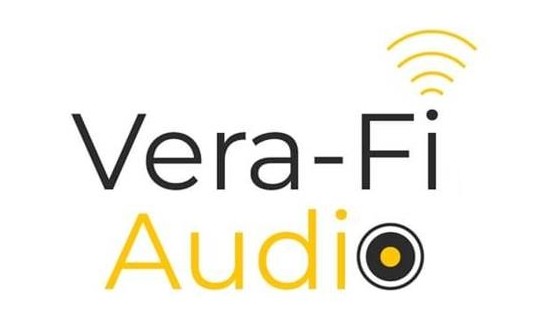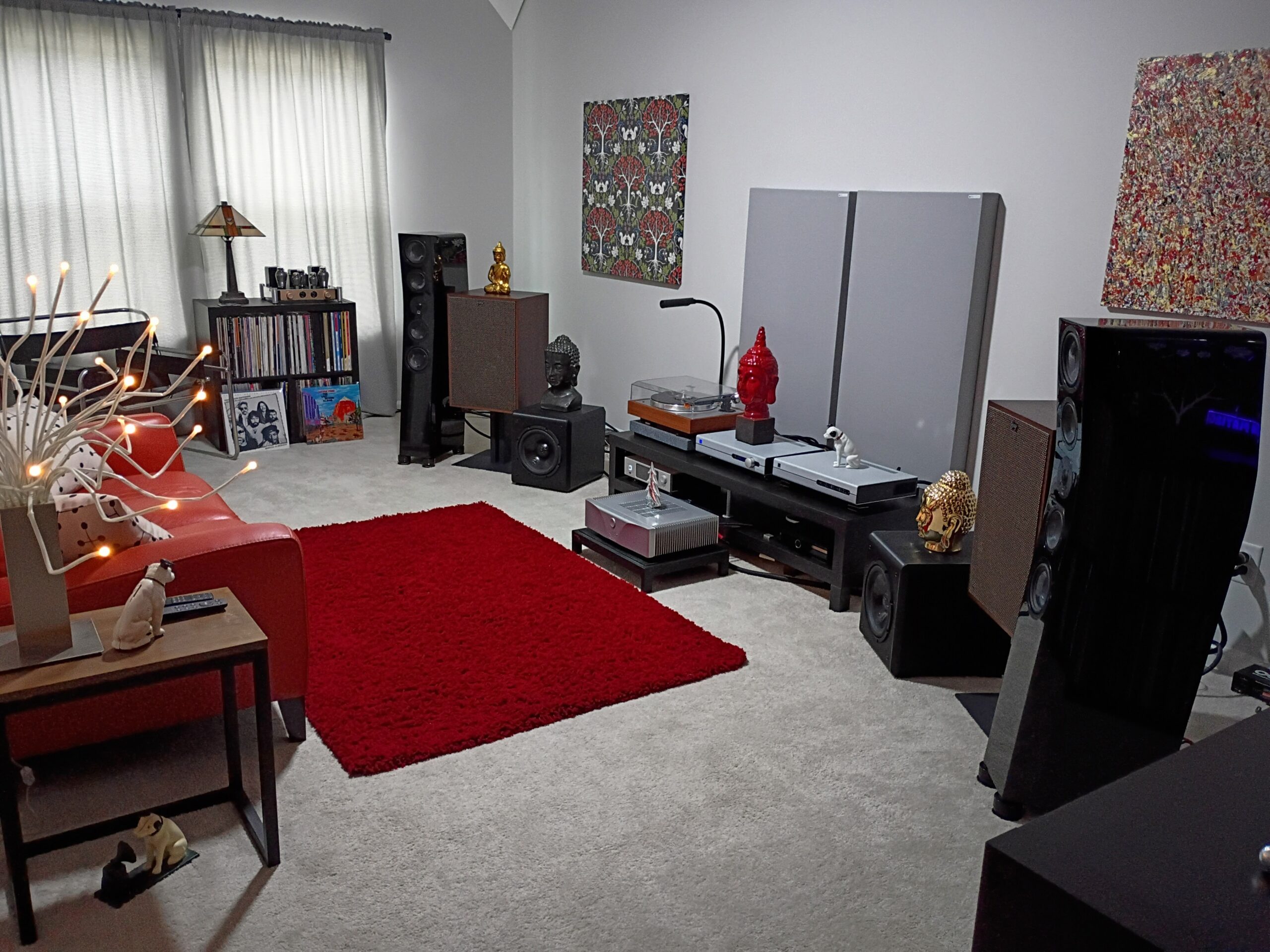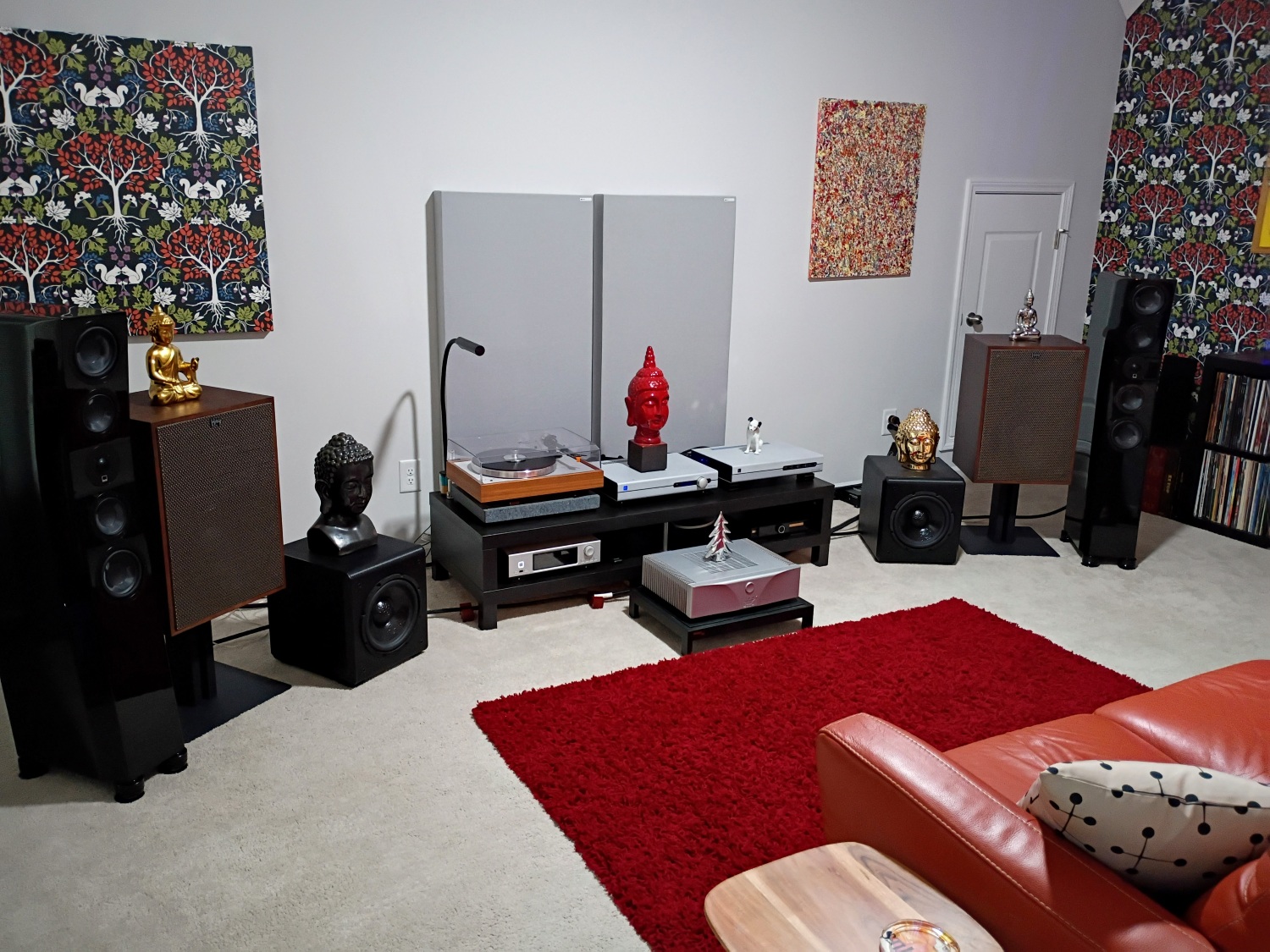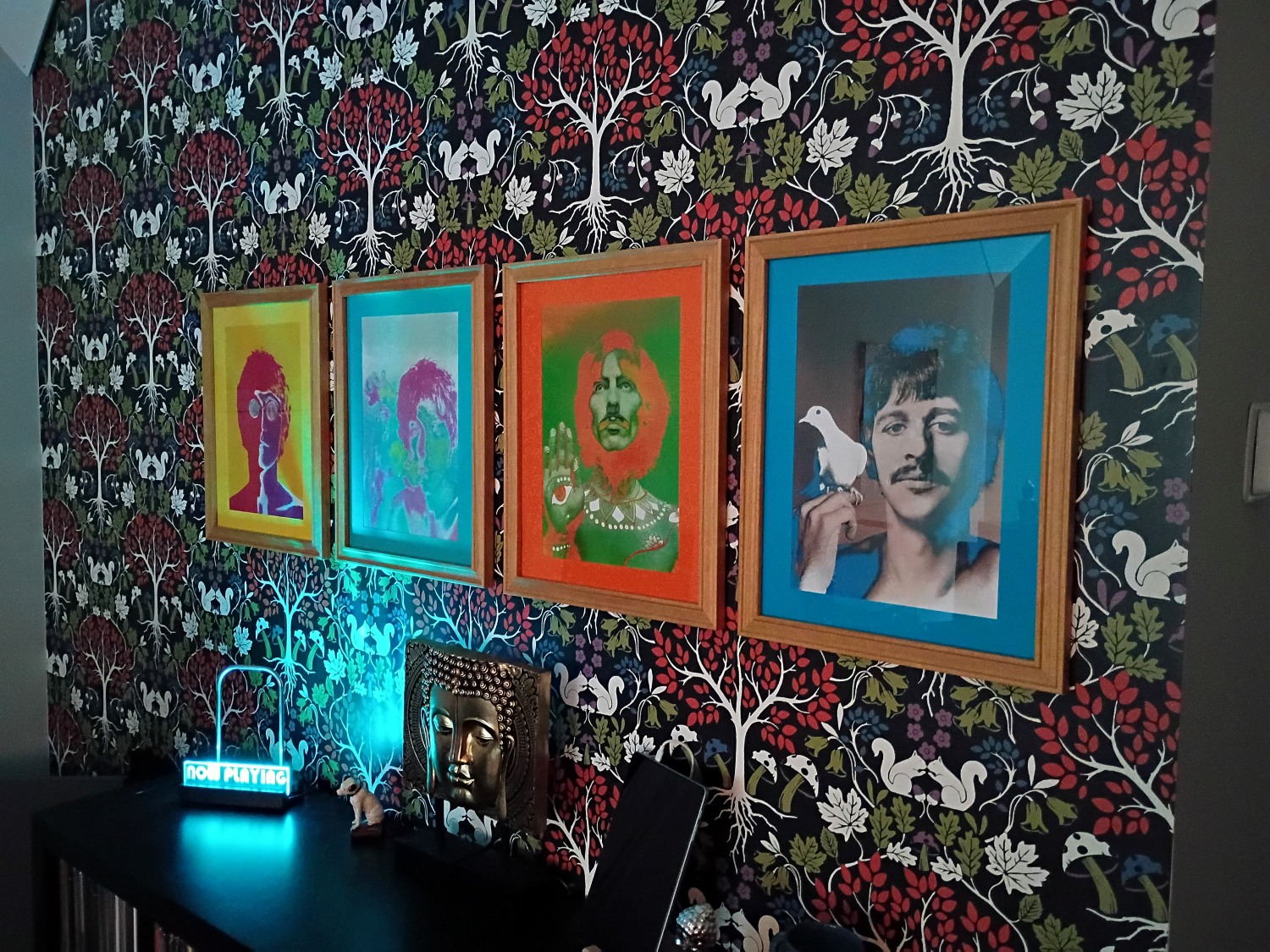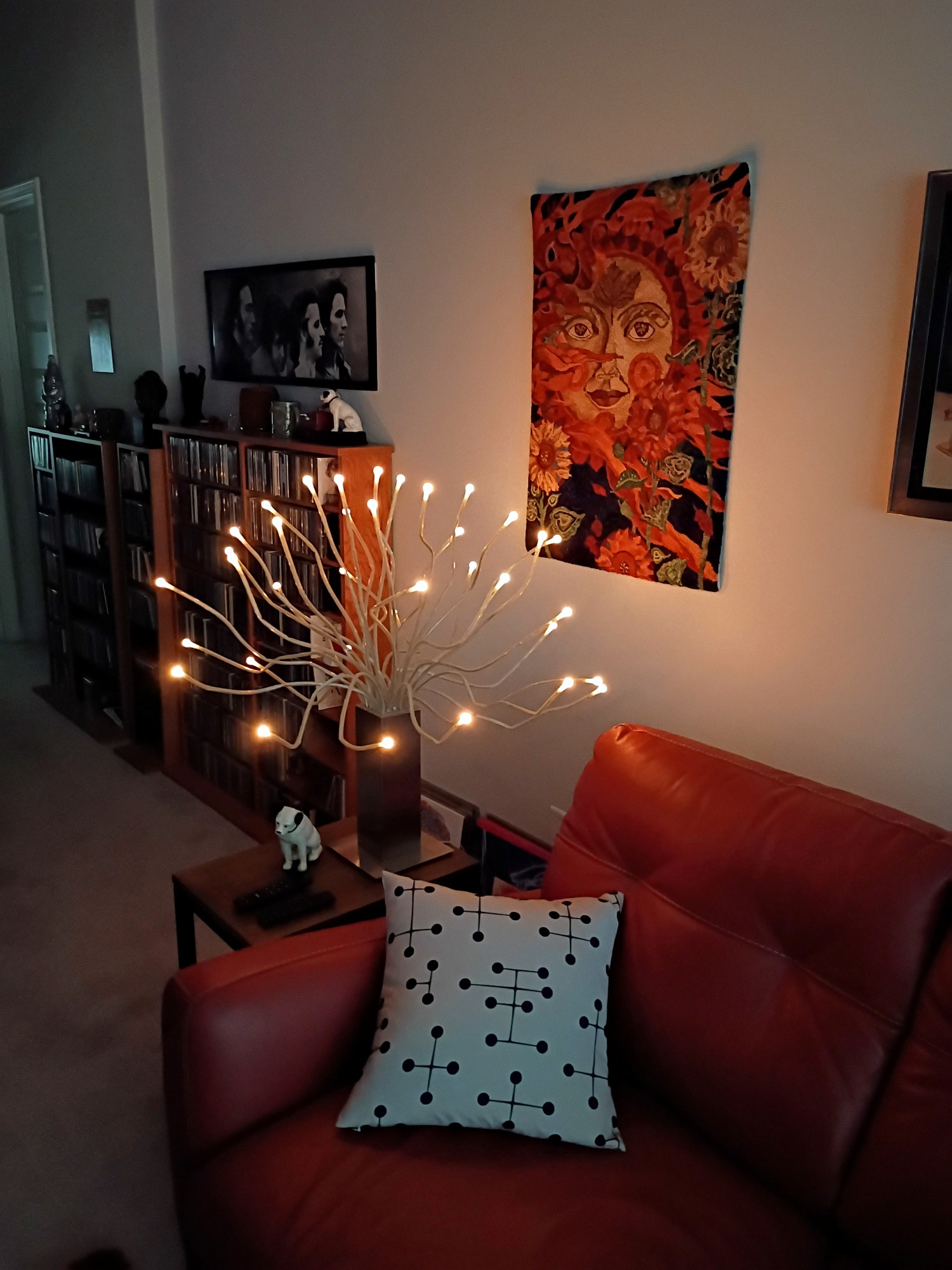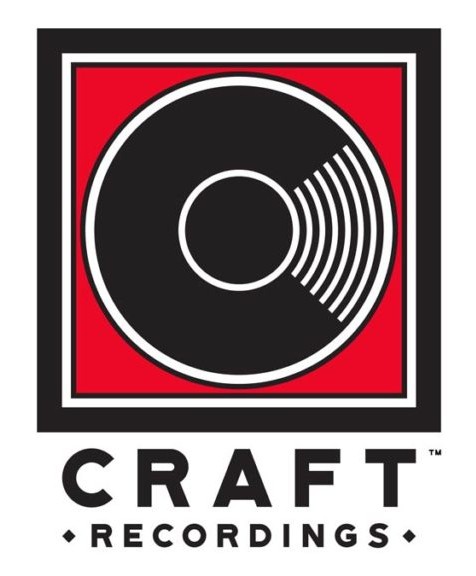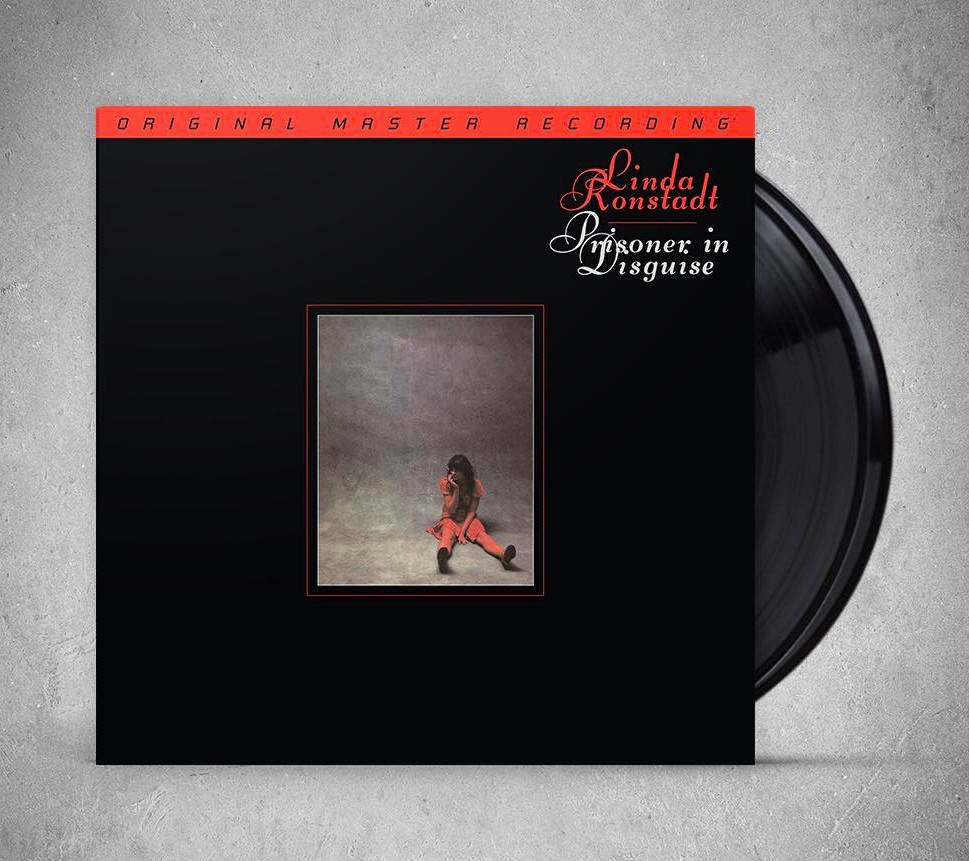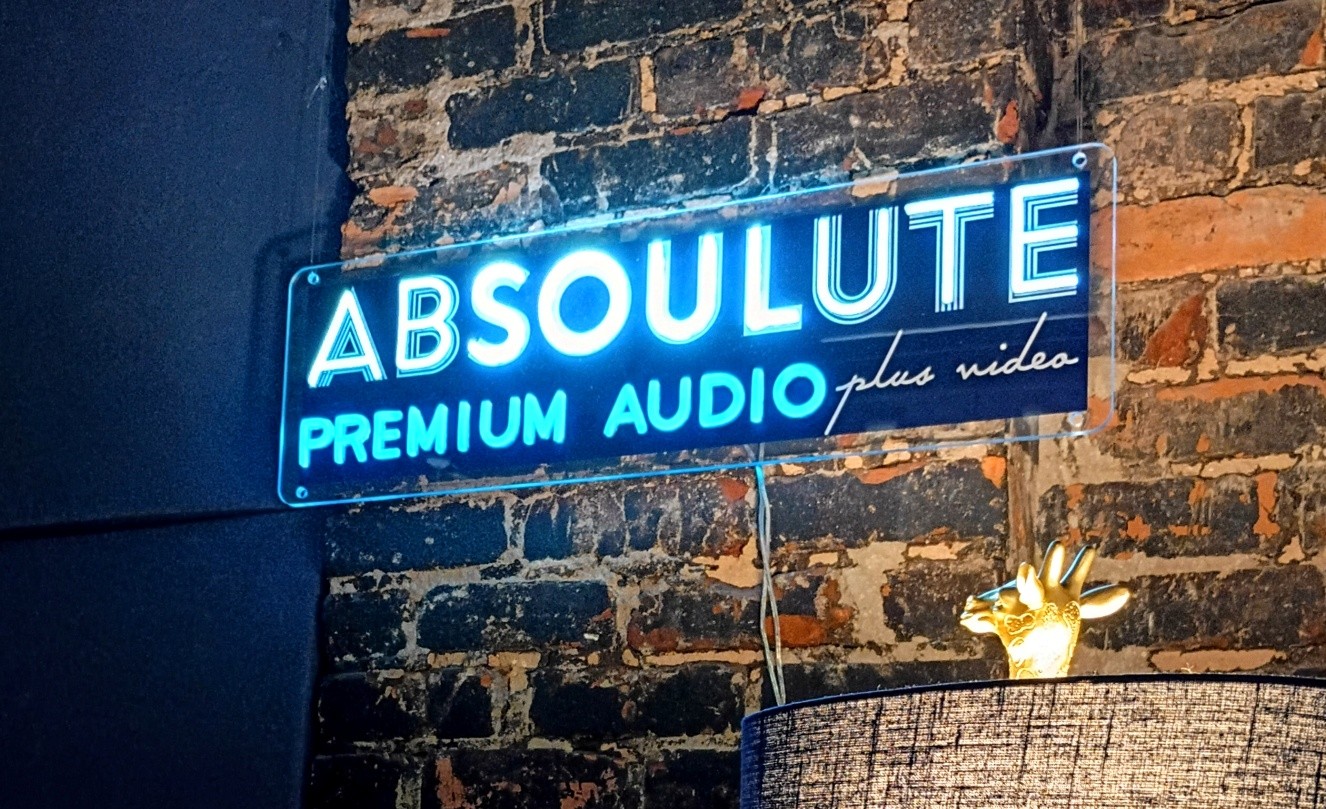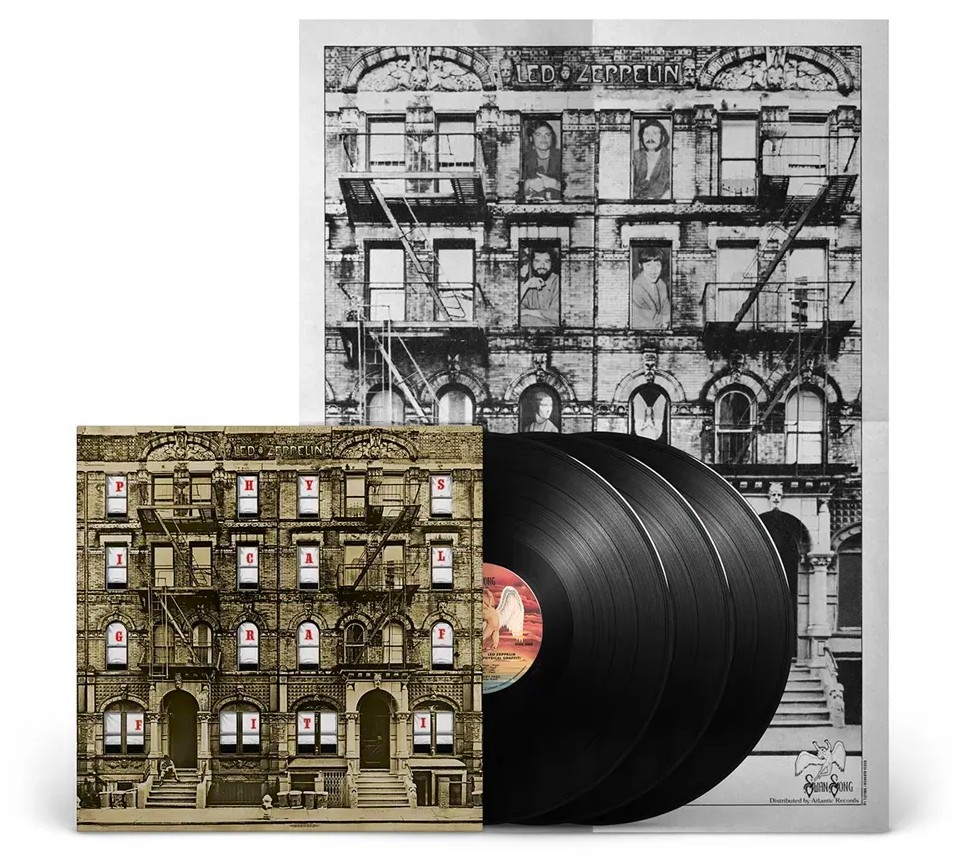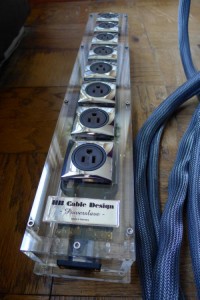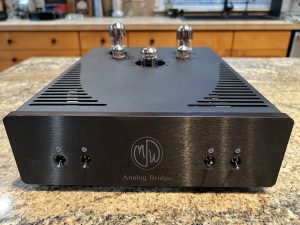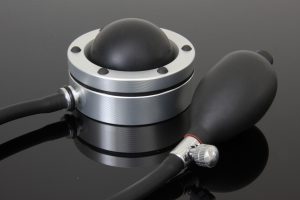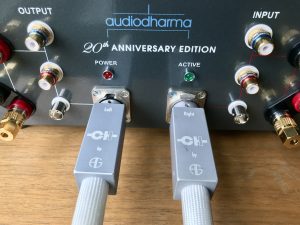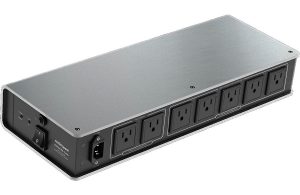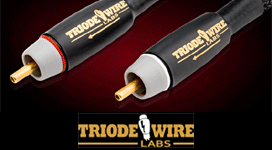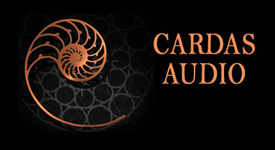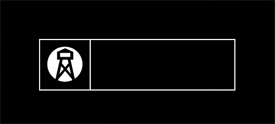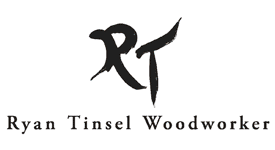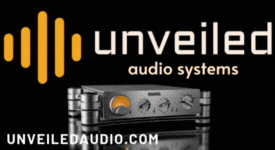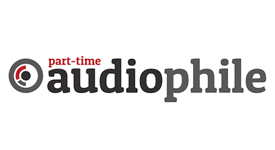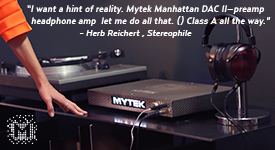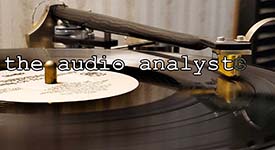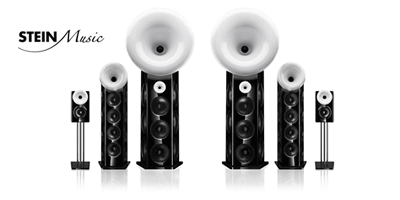When Mark Schifter hooked me up with the first two devices from Vera-Fi Audio's new trio of power conditioning equipment, I simply wasn't prepared for the dramatic differences they made to my all-analog system. That system uses single-ended RCA connections throughout, and it had a couple of problem noise areas I couldn't seem to eliminate, and I'd tried everything. The noise wasn't excessive, but constantly nagging, to the point I was certain the problems had to be equipment-related. The first noise issue was a low-level background buzz that was continually present; it wasn't loud enough in the overall spectrum to cause me any concern, but it was definitely there; you could hear it during LP playback, and I was convinced it had to be cartridge-related. Or maybe something in the PS Audio phono preamp, or perhaps the PrimaLuna tube amplifier. No amount of cable swapping or re-routing would eliminate it. It was a buzz, but it wasn't a buzzkill for my LP listening sessions, so I bucked up and endured it.
The second noise problem was definitely in the PS Audio Stellar phono preamp; when I'd attempt to set the correct moving coil load selection for my Ortofon Quintet Bronze MC cartridge, I'd encounter a repetitive oscillation noise that just about drove me nuts. The Stellar phono pre has multiple switched front panel settings for MC cartridge loading and a pair of rear panel knobs for custom adjustments; the back panel adjustment is where the perfect match for the Ortofon MC cartridge should have been. Any attempt to use the custom setting or anything less than 200 ohms came with that low-level oscillation in tow, and just about drove me crazy. No amount of online research or inquiries to PS Audio could resolve the situation, and the noise was generally only obvious between tracks and at the end of LP sides. I otherwise loved the sound of the Stellar phono pre, so I just gave up and dealt with the minor inconvenience.
Mark's new pair of devices—the Line Noise BlackHole (LNBH) and Snub Station Zero (SSZ)—completely eliminated any audible trace of noise in the analog system, while also improving every aspect of its performance; you can read more about my experiences with those excellent devices HERE. As I told Mark within hours of hooking them into the analog system, the LNBH and SSZ in combination clearly represented Vera-Fi's most important product release yet! The nagging background buzz I was certain was in the cartridge, phono pre, or tube amp—was gone. And the odd oscillation in the PS Audio Stellar phono preamplifier—also completely gone, and I quickly realized that I could choose any gain or load setting with zero change to the background noise spectrum. Both of my nagging problems had been due to AC line noise all along!
The missing link in the Vera-Fi AC power conditioning setup was the yet-to-arrive Infinity Fuse (IF). As is often the case with Mark's new devices, I didn't have any real info on its intended purpose, and didn't fully understand how the IF was supposed to be implemented in my system. I'd probably need to give him a call once it showed up!
The Infinity Fuse arrives
Vera-Fi's new Line Noise BlackHole and Snub Station Zero made such a huge difference in the analog system, I was hesitant to remove them for use in evaluation of the digital source system. Mark volunteered to send additional LNBH and SSZ units, and they arrived very quickly along with the Infinity Fuse. And that absolutely necessary call to Mark Schifter cleared things up significantly for me. Mark may often speak cryptically about new equipment he's extremely excited about, but he can also definitively answer specific questions about how those devices work, the technology involved, and how they're implemented in your system.
As it turns out, the Infinity Fuse is a new variation of Vera-Fi Audio's Swiss Digital Fuse Box (SDFB), which electronically replaces the weakest link in your power amplifier (or many other electronic devices)—the AC line fuse. I already use an SDFB with my PrimaLuna EVO 300 tube integrated amplifier in the all-analog room, and in my original evaluation, I was more than a bit concerned about taking the plunge. My fears proved to be completely unfounded, and the SDFB allowed the PrimaLuna amplifier to achieve unrestrained performance, bestowing it with previously unknown levels of power, dynamics, and musicality. You can read those original reviews HERE and HERE. That same SDFB unit was used inline with the new LNBH and SSZ devices in the all-analog system; the new Infinity Fuse would take its place in the digital source system setup.
Whereas each Swiss Digital Fuse Box was individually custom-programmed for use with device-specific amperage, the Infinity Fuse is user-programmable, with front panel dip switches for amperage and fuse rating, whether fast-acting or slo-blow. Mark had been telling me about supply-side problems due to the tariffs implemented by the current administration, and those were making production of the SDFB prohibitively expensive. The IF allows the user to custom program the device for each installation, and minimizes the need to individually build SDFB units—except for specialty situations, like my 16 amp Naiu Labs Ella amplifier. While also allowing end-users to easily experiment with substitution of the IF with other system equipment, helping them confidently decide whether getting an additional IF (or two, or three!) would be worth the expense. Mark tells me he gets many positive comments regarding how well the IF works with DACs, for example.
And of course, just as with the Swiss Digital Fuse Box, the Infinity Fuse requires the use of the solid metal rod Vera-Fi calls the "Sluggo" to replace your device's existing AC line fuse. The IF electronically becomes the fuse you're removing, and the Sluggo is the part of the equation that allows your device to receive unrestrained AC current flow by greatly increasing the surface area the signal flows through enroute to your device. Of course, you need to tell Vera-Fi what size your device fuse is, so that they can send the corresponding Sluggo. The Sluggo is available in several choices of metals and conductive coatings; Mark supplied the Graphene Sluggo with the IF he sent to me. Graphene is the best electrical conductor known to man, and offers extreme AC current transfer to your chosen device.
There's one caveat with the Infinity Fuse (and all of Vera-Fi's new range of power conditioning equipment): the total amperage load can't exceed 10 amps. That may seem prohibitively low, but it's actually not as much of a limiting factor as it might seem at first glance. None of the connected equipment in either of my systems came even close to the 10 amp total.
First order of business: the Boyuurange A50 Mk III SET integrated amplifier
I'd recently seen Steve Guttenberg's rave about this inexpensive Chinese-made Boyuurange A50 MkIII SET (Single Ended Triode) tube amplifier on his YouTube channel. For a true SET 300B tube amp for under $1000, I had to give it a try, and ordered one right away. Boyuurange is distributed in the US by China-hifi-Audio.com, but one could be gotten more quickly from Amazon, and it arrived in two days. The A50 uses a tube complement that features a 5Z3PAT rectifier tube (it converts the AC line input to DC to power the amp), a pair of 6N8P input tubes, and a pair of 300B triode power tubes. The 300B tubes were from Psvane in China, but the rectifier and input tubes were marked with a logo I'd never seen before—several hours of online research revealed them to be older NOS Shuguang tubes (also from China). I reached out to Nelson Wu from RAY Tubes about the setup, and he literally gushed about how well-made the Boyuurange amps are, and how baffled he is that they can present so very much value to the audiophile at such a low price.
The 300B SET tube is revered among audiophiles, and the tube rectifier circuit is widely considered to be the element of SET design that enables the "bloom" effect of 300B tubes. The A50, as typical for most 300B amplifiers, is specified to output only 3-watts, but is capable of 7.5-watts, so a very high-efficiency loudspeaker is definitely required to achieve satisfying sound. The amp has three single-ended (RCA) input options, with taps for 4 and 8 ohm loudspeakers; it also features an ALPS volume control potentiometer; its circuit design utilizes no negative feedback. The A50's highly polished outer case features a gold-toned aluminum front panel that sports a pair of VU meters with knobs for input selection and volume control; its build quality is almost over-the-top! Unusually—especially for an SET amp at this price point—the A50 is self-biasing, which makes its operation even more effortless.
My usual digital source system setup is fully balanced from end-to-end; balanced cables are typically very noise-free, and that system is generally very quiet when compared to the all-analog system. Of course, all the input connections of the Boyuurange SET amplifier are single-ended, so that definitely enhances the possibility of any stray RF noise popping up in that system. Buoyed by my experiences with the Vera-Fi power conditioning gear in the analog system, I didn't expect any problems in the digital room, but I was a bit concerned about being able to easily establish a baseline for improved performance in that system. That also proved to not be a problem!
Configuring the Vera-Fi equipment in the updated digital source system
Prior to the arrival of the A50, I disconnected the digital source equipment from the AudioQuest Niagara power conditioner, then set up the system with the Vera-Fi Audio power conditioning equipment in the same way as in the all-analog room. In case you haven't read the previous Vera-Fi power conditioning review, I'll recap the highlights: The Line Noise BlackHole (LNBH) is an EMI/RFI passive sink filter designed to clean up noisy AC power. It employs no current limiting or compression, and offers high level attenuation of differential and common mode noise, as well as providing significant surge protection capabilities. Plain and simple, it lowers noise without impeding the ability of your power amplifiers or other equipment to deliver unhindered current. The LNBH plugs directly into a wall outlet, and is powered on by a set-and-forget rear panel switch. The unit features a single multi-compatibility outlet on its front panel; multi-compatibility outlets are a great cost-saving feature, in that they work for both IEC and Schuko power cords.
The Snub Station Zero (SSZ) is an AC mains power conditioner that features a state-of-the-art DC blocker, a high performance EMI filter, and a soft-start circuit, which prevents in-rush current that can damage equipment during the power-up phase. The SSZ plugs directly into the LNBH's front panel outlet, and features three multi-compatibility outlets on its front panel. One of those outlets is intended for connection of your power amplifier; its soft-start circuitry is especially beneficial to SET, tube, or vintage amplifiers, and can greatly prolong tube life in those amps. It also features a single power switch on the rear panel. Both of my rooms also feature Vera-Fi MainStream and SnubWay noise control devices, which were placed in specific locations per Mark Schifter's instruction; that same placement wasn't practical in the new arrangement. Mark tells me that they've learned a lot about how those devices work in a multitude of installations since they were released a year or so ago, and simply having them on the same circuit as your audio equipment yields the same result as specific placement.
I set the dip switches on the Infinity Fuse to 4 amps and Fast Acting fuse, which matched the requirements of the Boyuurange A50. I then removed the stock fuse from the A50 and replaced it with the Graphene Sluggo; the A50 was then plugged into the IF, which was plugged into the high-current, soft-start outlet of the Sub Station Zero. As in the all-analog room, I also used more robust power cables to connect everything between the Vera-Fi devices and the AudioQuest Edison wall outlet. I love the multi-compatibility outlets on the new Vera-Fi equipment, which are much more robustly built than I would have expected; they gripped the AC power cords much more firmly than the previous conditioning equipment. The power-on sequence for the Vera-Fi equipment is very straightforward: you switch on the LNBH, then the SSZ; there's no power switch on the IF, so you need to watch the unit's LED display for a moment. If it glows all green (it did!), then it's good to go, and I switched on the Boyuurange A50 amplifier. My S.M.S.L. VMV D2R DAC and Aurender A1000 server/network streamer were plugged into the SSZ's two remaining outlets. With the exception of the amplifier, I leave everything else powered on 24/7.
Listening to the digital system with the new equipment
My initial intent was to use my pair of KLH Model Five loudspeakers, which have a sensitivity of 90 dB/watt, in tandem with a pair of Vera-Fi Audio Caldera 10 subwoofers connected by their speaker level inputs to the A50's speaker terminals. I thought the Model Fives would be a perfect match, but that proved to not exactly be the case—for most listening, they were okay, but if I pushed the volume on only slightly more challenging selections, the SET amp would clip. I wasn't quite certain what the next step would be, then I remembered the pair of standmount Klipsch RB3 Reference monitors sitting in my supply closet. They're rated at 94 dB/watt, and despite being over 25 years old, proved a perfect match to the A50. Here's the kicker—I found them at a thrift shop ten years ago in mint condition, and only paid $10 for the pair that originally sold for $900. After moving them about the room a bit, slightly adjusting toe-in, and rearranging wall treatments, the soundstage and image scale snapped into place.
Music now played through this system with power, dynamics, and authority, and presented a remarkably believable scale of image for such a small speaker setup—the Vera-Fi Caldera 10 subs definitely helped. And even with the bargain-basement stock tubes (after burning in for 30 hours or so), the A50 was surprisingly musical, with the kind of clarity and transparency I'd never have dreamed possible from a $900 SET amp. Much of that goodness is definitely due to the Vera-Fi Audio power equipment, which in the digital source system delivered the same level of AC powerline quiet I was hearing in the all-analog room. The Infinity Fuse was an important addition to the setup—I experimented with before- and after-scenarios, and the difference between them was unmistakable. Listening without the IF was still very good, but with it in place, the A50 would play well beyond its 0dB threshold, often hitting unclipped peak levels that were several decibels beyond what should have been its maximum output level. I was completely stunned by playback of orchestral recordings, that would replay from the small Klipsch RB3's with the kind of scale and impact that was darn-close to a live orchestra.
The IF definitely allowed the A50 to play more effortlessly, and with an even greater level of authority and dynamics. This was the part that fully confirmed the worth of the sum of the parts of Vera-Fi's new power conditioning trio: the LMBH and SSZ provided the clean AC necessary for total system quiet, while the IF provided the oomph to allow the A50 SET amp to totally sing. And surprisingly, I can play just about anything in my usual playlists, at any volume, and no part of this system so much as breaks a sweat or offers even the slightest hiccup. The Boyuurange A50 has no remote, so that makes for a bit more effort on my part, with me constantly getting up and down to adjust the ALPS volume control. My listening choices tend to be all-over-the-place, and that occasionally poses a bit of an issue. Especially if I mix in any native DSD files, which tend to play at about 6 dB lower than everything else. What that translates into, is if I'm listening to a DSD64 rip of Harry Connick Jr's We Are In Love cranked nearly to the A50's maximum volume level, God forbid that the 16-bit/44.1kHz rip of Yello's Stella pops up next, which means a mad lunge towards the volume knob before Yello cranks at maximum dBs! It's happened a time or two, and while no damage will result (the 300B tubes will soft-clip), it can be a bit jarring, to say the least!
The Boyuurange A50 was originally intended as a fun diversion, but it's become my go-to for all my recent listening sessions. After settling on the Klipsch RB3 monitors and getting them properly configured, they'll play with a scale of image that just doesn't seem possible with such relatively small loudspeakers and so few watts. Nelson Wu is sending a full complement of RAY Select and Reserve tubes arriving later this month (the cost of just the RAY Reserve 300B tubes is more than that of the amplifier!), and I'm certain my listening will then get even more out of control.
The bottom line
My recent experiences with Vera-Fi's new gear was much as it has been in the recent past; I initially didn't know what to do with most of it—Mark definitely had to fill in the blanks for me. But once properly configured in my systems, it lifted their performance to a level far beyond anything I might have believed possible. In the analog system, it solved every single problem, such that I initially just sat and marveled at the absolute silence for darn-near an hour! When you can sit and listen intently to an audio system with high-end pretensions for that long, and you're not even playing any music, that really says something!
The Boyuurange amp was nothing more than an impulse purchase; I had no idea that it in combination with the Vera-Fi gear would transform my listening experiences to the extent that they have! Upgraded tubes in the amp will make a definite difference, and new pair of Klipsch RP 8000F II floorstanders are on the way soon. They're rated at 98 dB/watt, have a greatly improved compression driver/horn assembly, and should prove an even better match than the old RB3's for the flea-watt A50 amplifier. They're not the be-all, end-all in terms of high fidelity loudspeakers, but high-efficiency, high-end loudspeakers with any kind of legit street cred can be prohibitively expensive—regardless, it should be fun!
Thanks again to Mark Schifter of Vera-Fi Audio for thinking of me during his latest product release. The Line Noise BlackHole and Snub Station Zero have already gotten my highest recommendation, and the addition of the Infinity Fuse fully completes this trio of goodness. Vera-Fi's new power conditioning devices are next-level gear that will totally transform your listening experiences. Again, very highly recommended!
Infinity Fuse
Retail: $428, available for a limited time for $395
Line Noise BlackHole
Retail: $595, available for a limited time for $395
Snub Station Zero
Retail: $695, available for a limited time for $595.
Vera-Fi Audio
All photos courtesy of Vera-Fi Audio and the author.

